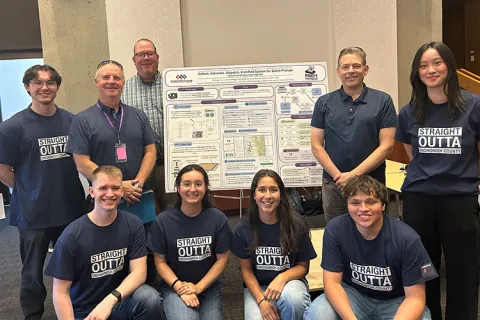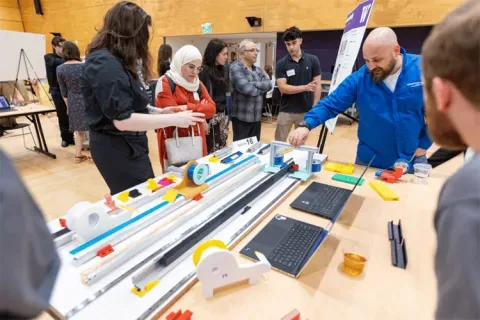NASA Jet Propulsion Laboratory
Machine Learning for Lunar Multi-Static Ground Penetrating Radar
The project sought to apply machine learning algorithms to multi-static radar images taken from a network of autonomously cooperating robots. The student team worked to develop such algorithms to be used on real-world data obtained from the multi-static GPRs operating on NASA’s CADRE Technology Demonstration on the moon, schedule for launch 2024. GPR data is essential for in-situ resource utilization discovery and characterization, and sub-surface science more generally. These resources include water ice, materials that can be used in propellant or power generation. A network of GPRs can generate significant data volumes in short periods of time that must conventionally be analyzed by “humans-in-the-loop” approaches, these can take from hours to days or more. In addition data oberved under the surface may be useful in guiding or controlling the mobile GPR platforms (robots) to new physical locations, this may occur in very short time-scales (seconds to minutes). Combining these factors along with the limited communications bandwidth from the moon (or other planetary body) to Earth, provides strong motivation to autonomously and intelligently analyze and characterize the raw multi-static GPR data to arrive at useful information. Machine learning algorithms offer significant potential in this regard. A desired outcome was the demonstration of a machine learning algorithm to autonomously identify and potentially characterize significant identifiers or discriminators in model data, real-world data from controlled field experiments, and finally real-world data obtained from the surface of the moon.
Faculty Adviser(s)
Payman Arabshahi, Electrical & Computer Engineering
Related News

Mon, 10/13/2025 | UW Mechanical Engineering
Capstone collaboration leads to award
An ME capstone team received first place for its energy audit of the UW School of Social Work building.

Thu, 07/17/2025
UW engineering students develop smart ballot solution
UW engineering students develop smart technology solution to improve ballot collection for Snohomish County.

Mon, 07/07/2025 | UW Mechanical Engineering
Capstone creations
Students displayed innovative capstone design projects at the 2025 expo.

Fri, 09/20/2024 | UW Civil & Environmental Engineering
Smarter irrigation for a greener UW
A new project combines satellite data with ground sensors to conserve water and create a more sustainable campus environment.